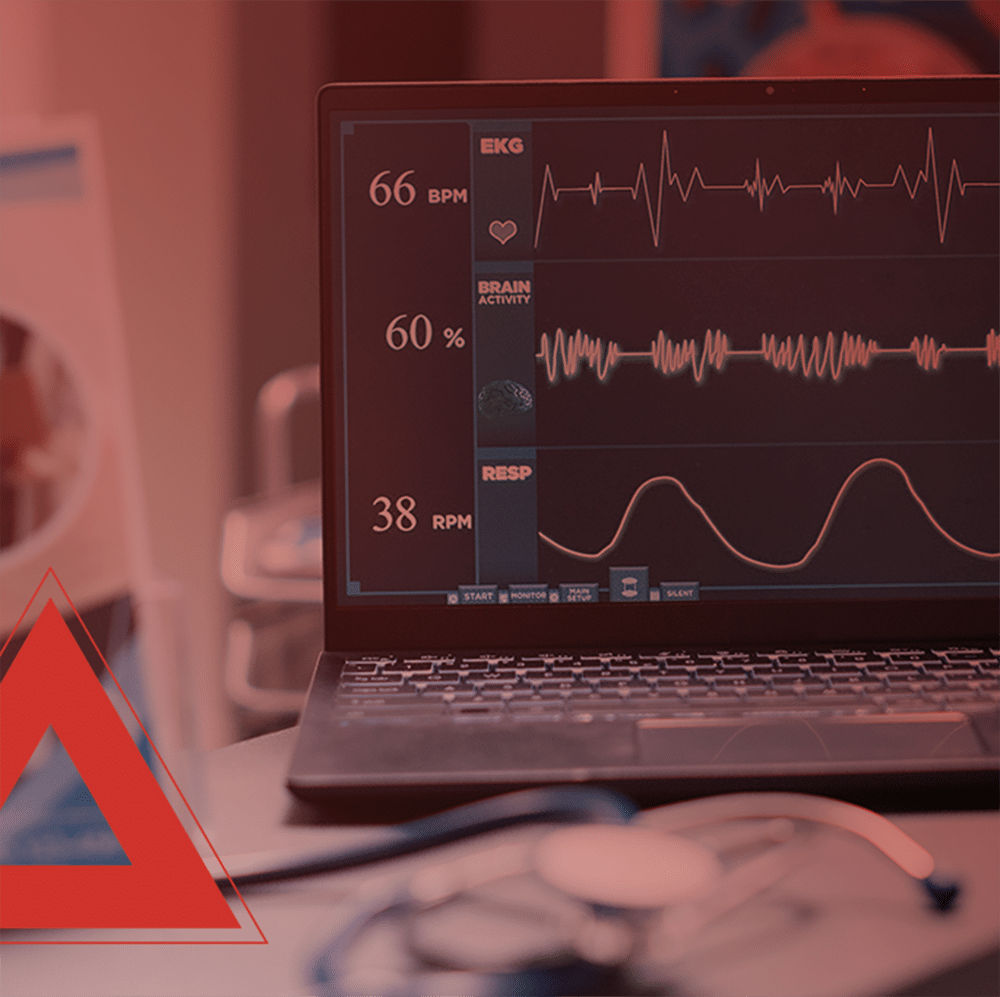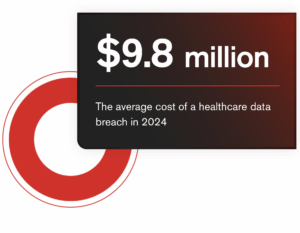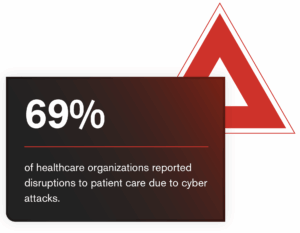Hospitals today are no longer just centers of care. They are intricate digital ecosystems where every function, from diagnostics to discharge, depends on interconnected technology, a fact that makes cybersecurity in healthcare critical. As digital transformation accelerates across the sector, its exposure to cyber risk grows as well. Attacks on healthcare systems have surged dramatically, threatening not only data and operations but also patient safety and trust.
In recent years, cybersecurity in healthcare has emerged as one of the most vulnerable industries due to outdated infrastructure, increasing third-party reliance, and limited budgets. In 2023 alone, cyberattacks on providers rose by over 120 percent, with ransomware and data theft becoming increasingly common. High-profile breaches involving vendor access have exposed millions of patient records. These incidents highlight how quickly third-party risks can ripple across healthcare networks.
To address these growing threats, healthcare leaders at both strategic and technical levels must treat cybersecurity in healthcare as fundamental to clinical continuity. This requires moving from reactive defense models to proactive cyber resilience. One solution gaining traction in this shift is deception technology.
The Healthcare Sector’s Expanding Cyber Risk
Healthcare providers are under pressure on multiple fronts. Many still rely on legacy systems that are difficult to patch or replace, leaving critical vulnerabilities unaddressed. Meanwhile, the number of connected medical and operational devices has grown exponentially, dramatically increasing the attack surface.
Third-party vendors are now deeply embedded within healthcare operations. Attackers increasingly exploit weak security controls in partner systems to gain a foothold within provider environments, often without detection.
Budget constraints only magnify these challenges. Most providers dedicate less than 10 percent of their IT budgets to cybersecurity. This limits their ability to recruit talent, modernize systems, and invest in advanced tools.
These outcomes affect more than just IT systems. Approximately 28 percent of organizations experienced increased patient mortality rates following cyber incidents.² Healthcare cybersecurity impacts lives, disrupts procedures, and undermines the trust patients place in healthcare institutions every day.
A New Model for Cyber Defense: Deception Technology
Traditional security tools rely on perimeter defenses, static rules, and post-incident analysis. These methods often fail to detect or contain threats in time.
Deception technology introduces realistic but fake digital assets, such as systems, credentials, and applications, that mirror the actual environment. These assets are invisible to legitimate users but lure attackers. Once engaged, they signal malicious activity and allow defenders to observe adversary behavior in real time.
Unlike conventional detection systems, deception produces no false positives. Every alert is meaningful. Security teams benefit from:
- Early detection, often during reconnaissance stages
- Insights into attacker tools and behaviors
Safe containment of threats within controlled environments - Reduced alert fatigue through signal clarity
This intelligence-led model shifts the focus from chasing alerts to managing risk with precision.
Real-World Applications in Healthcare Environments
Deception has already proven its value across a range of healthcare-specific threat scenarios.
- Lateral Movement Detection
When attackers breach initial defenses, their next move is often lateral exploration. Deception assets placed across the network reveal these movements early and provide insight into attacker intent. - Third-Party and Vendor Risk
Large-scale breaches frequently stem from compromised vendor systems. Deception can simulate partner interfaces, exposing unusual activity and stopping threats before they spread internally. For instance, a breach at Ascension affected over 437,000 patients due to a third-party vulnerability. - Legacy System Protection
Older systems that cannot be patched remain a serious vulnerability. Deception provides a protective layer, diverting attackers away from critical assets and toward monitored traps. - Credential and Identity Abuse
Privilege escalation and credential theft are common tactics. Deception tools monitor for unauthorized identity system use, helping to detect and disrupt attacks before escalation. - Insider Threats
Threats do not always originate externally. Deception allows security teams to detect inappropriate internal access without disrupting daily operations.
In each case, deception enhances visibility, speeds up detection, and ensures continuity of operations.
In similarly high-stakes environments like national energy grids, CounterCraft has proven its ability to deliver early detection without disrupting operations. See the real-life case study here.
Strategic and Operational Value for Leadership
For CISOs and senior leadership, deception supports both strategic and operational goals. It generates clear metrics such as dwell time, time to detect, and attacker behavior profiles. These metrics enhance compliance and support board-level reporting.
Security teams benefit from accurate telemetry and meaningful alerts. This allows them to prioritize real threats and respond faster. Deception also bridges gaps across departments by providing data that clinical, compliance, and administrative teams can easily interpret and act on.
Cybersecurity strategy in healthcare must now directly support business continuity. Deception is one of the few solutions capable of achieving this dual objective without adding unnecessary complexity.
A Guide to for Cybersecurity in Healthcare
Ready to learn more about how to improve cyber resilience in healthcare? Download The Cyber Prescription: Strengthening Healthcare Security to explore:
- The top five threats facing healthcare now
- How to defend legacy infrastructure without disrupting operations
- Practical use cases of deception deployed in real hospitals
- Integration tips for aligning deception with existing tools and workflows
Resilience Is the Standard for Modern Healthcare Security
The consequences of weak defenses in healthcare are not limited to financial loss. They extend to patient care, institutional credibility, and public health.
CounterCraft’s deception-powered platform offers healthcare providers an intelligent, scalable, and efficient way to strengthen their cyber posture. At CounterCraft, we help healthcare providers stay ahead of threats with deception technology built for real-world complexity. Faster detection. Smarter response. Zero disruption.
Ready to talk? Book a personalized demo to learn how CounterCraft helps healthcare organizations stay operational, even during crises.



